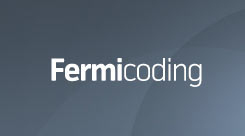About us
Fermicoding brings your ideas to life.

We've always felt that a business shouldn't be limited by technology. Still, a lot of our customers changed their business processes to fit the capabilities of the CMS they had. We believe it should be the other way around, and we have the knowledge and experience to make it so. This belief dates back to our early days when we were the Web team of a major music festival. Every day we had to come up with new ways to realise extraordinarily creative ideas and push the limits of what was possible within the Web development environment. We needed to really know the playfield to be able to pull it off.
As we grew as a company, we strived for more challenging work, and that drive scored excellent results both for our clients and for ourselves. Now our company specializes in AI Automation, Busness process automation (Information Systems), Digital product design, Mobile apps. We are able to offer complex Web Applications, CRMs, E-commerce, Social Networks or Websites.
Our clients can count on a team of developers led by reliable management experienced in a wide range of different projects implemented using the agile project management approach.

